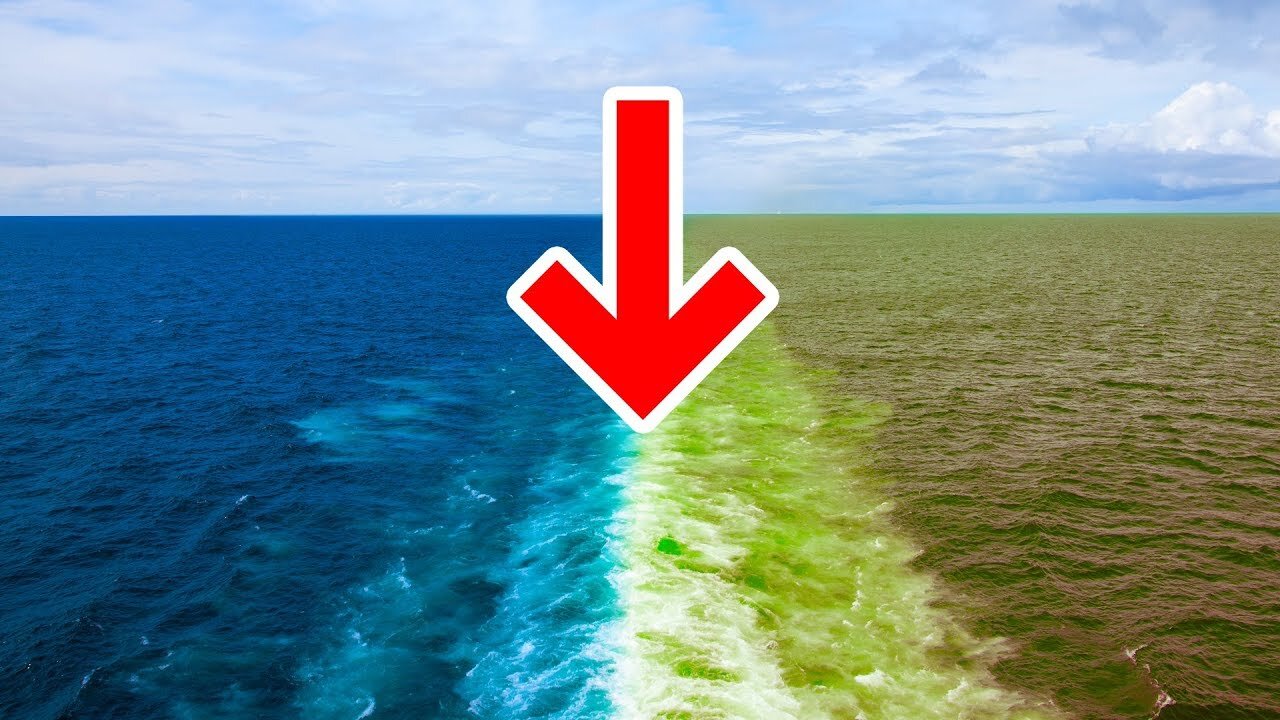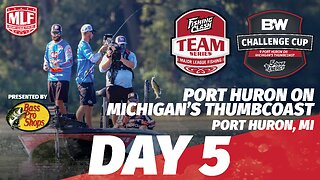Premium Only Content

Why the Atlantic and Pacific Oceans Don't Mix
When you look at the seas and oceans on the map you might think that they just flow into each other. It seems like there’s only one big ocean, and people just gave different names to its parts. Well, you’ll be amazed at how vivid the borders between them are!
The border between the Pacific and Atlantic oceans is like a line between 2 worlds. It looks as if the two oceans meet at an invisible wall which does not let them flow into each other and mix their waters. Why on Earth does it happen? We know for sure there is no invisible wall inside, and water is water. So what could interfere with its mixing?
TIMESTAMPS:
Water can be different too! 0:40
What are haloclines? 1:03
The most spectacular clines on the planet:
- The North and Baltic Seas 4:38
- The Mediterranean Sea and the Atlantic Ocean 5:04
- The Caribbean Sea and the Atlantic Ocean 5:16
- The Surinam River and the Atlantic Ocean 5:36
- The Uruguay River and its afflux 5:43
- The Rio Negro and Solimões Rivers 5:58
- Mosel and Rhein 6:19
- Ilz, Danube, and Inn 6:30
- Alaknanda and Bhagirathi Rivers 6:48
- Irtysh and Ulba 6:56
- The Jialing and Yangtze Rivers 7:11
- Irtysh and Om 7:20
- Chuya and Katun rivers 7:20
- The Green and Colorado rivers 7:50
- The Rhone and Arve rivers 8:10
#oceans #rivers #brightside
SUMMARY:
- Pacific oceans have different density and chemical make-up, the level of salinity and other qualities. One can see by their color that they are far from being the same.
- Haloclines – borders between waters with different salinity – are the most spectacular, and this is what we see when the Atlantic and the Pacific oceans meet.
- Haloclines appear when water in one ocean or sea is at least 5 times saltier than in the other.
- Another important difference between the two oceans' water is the strength of molecules' connection, or surface tensile strength.
- Maybe they could gradually start mixing with time, but as the flows in them have opposite directions, they just don’t have time to do this.
- There are also thermoclines – borders between water of different temperatures, like the warm water of Gulf Stream and much colder North Atlantic Ocean.
- The North and Baltic Seas meet near the Danish city of Skagen. The water in them does not mix because of different density.
- The Mediterranean Sea and the Atlantic Ocean meet at the Strait of Gibraltar and have a different density and salinity, so their water does not mix too.
- The Uruguay River and its afflux meet in Misiones province in Argentina. One of them is cleaned to be used in agriculture, and the other gets almost red because of loam during rainy seasons.
- Mosel and Rhein meet in Koblenz, Germany. Rheine has lighter water and Mosel – darker.
- Alaknanda and Bhagirathi Rivers meet in India. Alaknanda is dark and Bhagirathi is light.
- The Jialing and Yangtze Rivers meet in Chongqing, China.
The Jialing is clean and the Yangtze is brown.
- The water of the Chuya has an unusual cloudy white color here and looks dense and thick. Katun is clean and turquoise. Flowing into each other they form a single two-colored flow that does not mix for some time.
- The Rhone and Arve rivers flow into each other in Geneva, Switzerland. The Rhone is a pure river that flows out of the lake of Geneva, the Arve is cloudy as it gets its water from glaciers of the Chamonix valley.
-
 2:18
2:18
Overpower Oceans Leadership Channel
4 years agoWhy Leaders Don't Try
14 -
 0:51
0:51
Inspirational and motivation for today
4 years agoWhy diets don't work
3 -
 0:51
0:51
NASA Space Administration
4 years agoDraining Earth's oceans, revealing the two-thirds of Earth's surface we don't get to see
120 -
 LIVE
LIVE
Redacted News
27 minutes agoEMERGENCY! BILL GATES CULT MEMBERS FOUND PLANTED INSIDE MULTIPLE FEDERAL AGENCIES, RFK FURIOUS
18,846 watching -
 UPCOMING
UPCOMING
Kimberly Guilfoyle
1 hour agoFull Breaking News Coverage: Live with John Nantz & Steve Moore | Ep250
289 -
 LIVE
LIVE
vivafrei
2 hours agoShameless Politicization of Tragedy! Susan Monarez is OUT! Pritzker is an IDIOT! & MORE!
10,698 watching -
 LIVE
LIVE
Major League Fishing
6 days agoLIVE! - Fishing Clash Team Series: Challenge Cup - Day 5
430 watching -

The Quartering
3 hours agoCount Dankula Live On Migrant Crisis In Europe, Whiteness & More
90.8K102 -
 3:46:59
3:46:59
Barry Cunningham
6 hours agoBREAKING NEWS: KAROLINE LEAVITT HOLDS WHITE HOUSE PRESS CONFERENCE (AND MORE NEWS)
49.8K37 -
 47:21
47:21
Stephen Gardner
19 hours ago🔥Elon Just Exposed the Most Corrupt Man on Earth - Trump Makes BOLD MOVE!
13.2K65